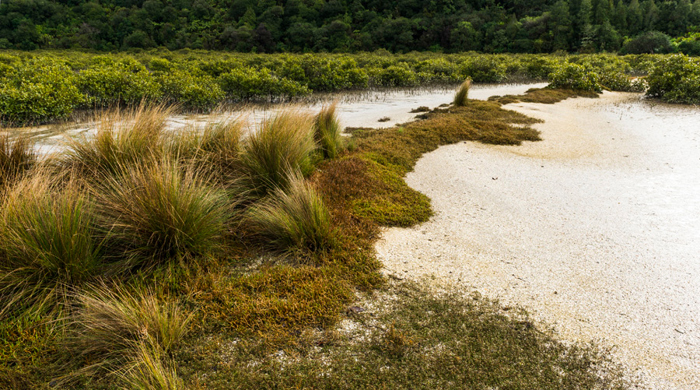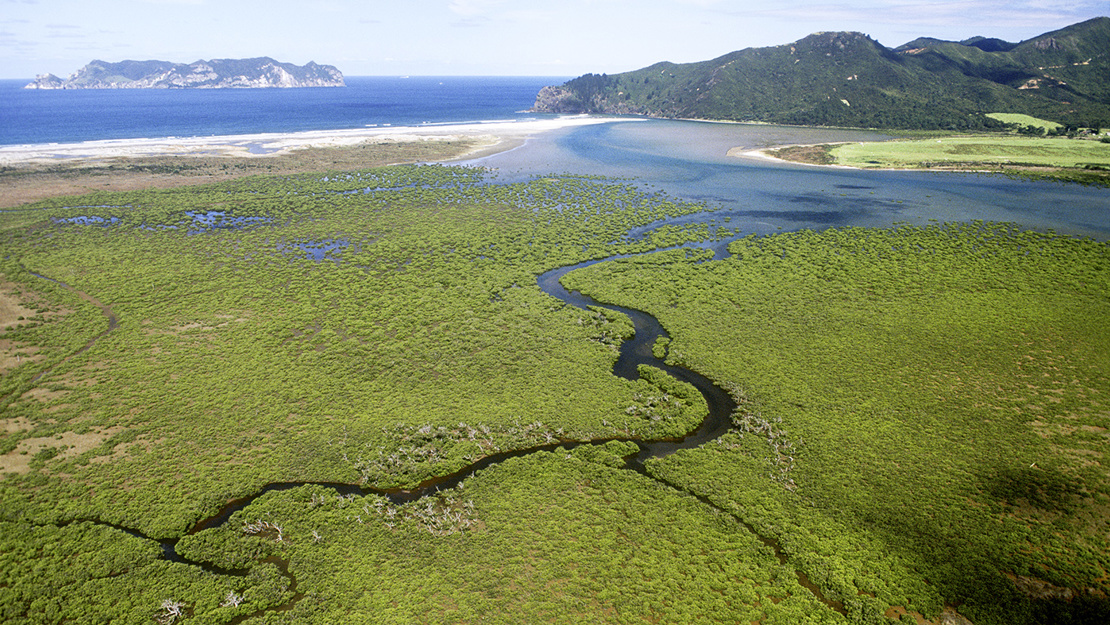Mangrove forest and scrub ecosystem (SA1)
Mangrove forest and scrub is found in tidal estuaries, inlets and where salt water meets fresh at the mouths of rivers and streams. This ecosystem has a range of distinct plant communities that provide habitat for birds and fish.
Coastal saline ecosystem
About this ecosystem
Mangrove forests grow in frost-free areas generally within tidal estuaries, inlets, and the coastal parts of rivers and streams. Water salinity varies, depending on salt and freshwater input and dilution. Soils are gley, locally with shell and/or gravel barrier beaches.
There are seven variants of this ecosystem. These are:
- seagrass beds
- mangrove forest
- sea rush and oioi
- herbfield
- shell barrier beaches
- coastal scrub/low forest
- oioi-needle grass on lava flows.

Flora and fauna in this ecosystem
Species composition in the distinct plant communities (variants) correlates to the duration of tidal inundation, elevation and salinity.
The mosaic of habitats supports a wide range of New Zealand shorebird species, including:
- kawau (shag)
- banded rail (mioweka)
- matuku (heron)
- pūkeko.

Threats to this ecosystem
The most significant threats to this ecosystem include:
- eutrophication
- stock grazing and trampling
- increased sedimentation as a result of land-use change in surrounding catchments.
Increases in sedimentation cause seagrass communities to decline, which leads to an expansion of mangrove forest.
Mangrove clearance in urban areas is an increasing threat.
Climate change will have significant impacts on the extent and distribution of some variants in this ecosystem. As a result, some shell barrier beaches may disappear.



